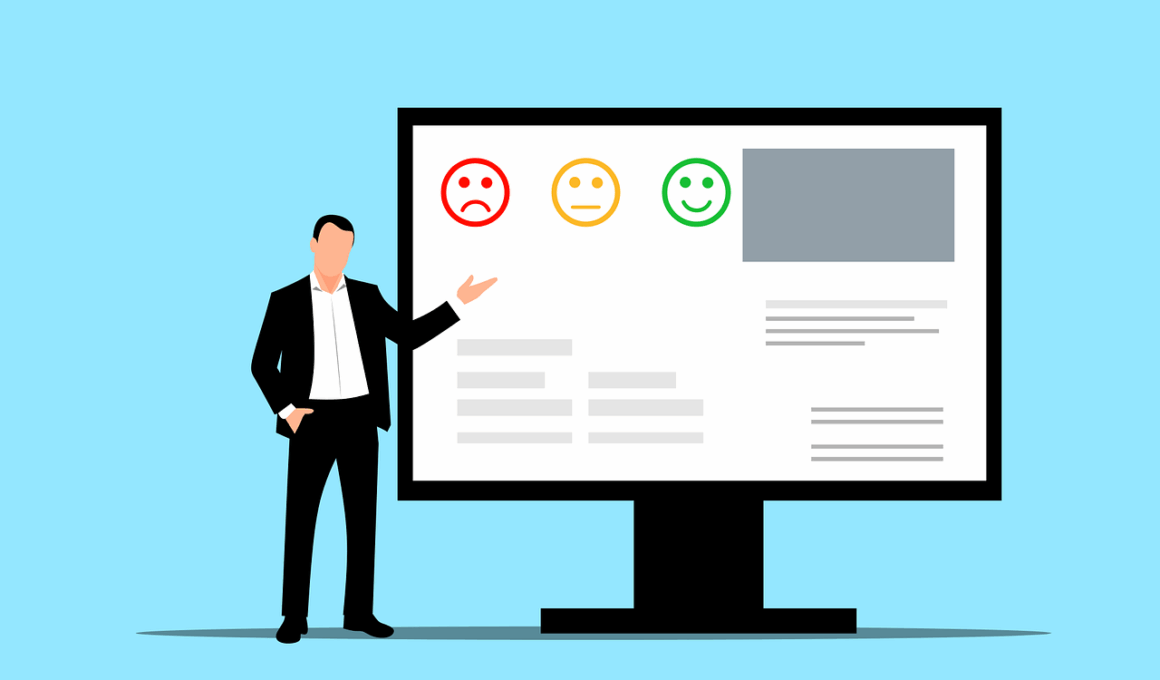Leveraging Facebook Surveys for Gathering Product Insights
Social media platforms like Facebook are crucial for brands seeking product feedback from consumers. Using Facebook surveys can help companies tailor their products to better meet customer needs. To collect effective feedback, businesses should carefully design their surveys. Begin by establishing clear objectives about what insights you aim to gather. Creating targeted questions will lead to more accurate responses. A well-designed survey avoids confusion, ensuring more meaningful data collection. Engaging with customers through surveys also creates a sense of involvement, making them feel valued. Keep your survey brief; lengthy surveys often lead to higher abandonment rates. Focus on using clear and straightforward language to ensure all participants can easily understand each question. While designing the survey, consider incorporating an incentive, such as discounts or promotional giveaways, to encourage participation. Additionally, consider the timing of your survey postings to align with peak engagement times in your target audience. Feedback collection is most effective when reached to the right audience at the right moment, maximizing potential responses and insights. Collaborating with influencers can further amplify the reach of your survey.
Choosing the right format for your Facebook survey is essential for effective data collection. Various formats can be used, such as polls, in-depth questionnaires, or simple feedback forms. For quick responses, consider using built-in poll options on Facebook, as they encourage immediate engagement. However, for detailed insights, a comprehensive questionnaire may be more beneficial. Platforms like SurveyMonkey can be linked to your Facebook posts to achieve this. Prioritize questions that encourage open-ended responses, allowing customers to share their thoughts thoroughly. Engaging visuals can also enhance participation rates; consider adding images or videos that represent your products effectively. To maximize your survey’s visibility, leverage Facebook advertising options, enhancing target-specific reach. Ad campaigns can showcase the survey to likely respondents based on behavior and interests, boosting response rates significantly. Keep track of survey responses in real-time to analyze trends and sentiments. By observing feedback patterns, companies can adapt their products efficiently. Furthermore, ensure to communicate back to the participants about how their feedback influenced product adjustments. This feedback loop plays a crucial role in fostering loyalty and trust between the brand and its customers.
Promoting Your Surveys Effectively
Promotion is key to ensuring that your Facebook surveys reach a wide audience. Start by utilizing your existing customer base by sharing the surveys through your brand’s Facebook page. Regular updates about the survey can be featured in your posts to remind followers. Consider creating engaging graphics or short video walkthroughs showcasing the importance of the survey, making it visually appealing. Additionally, asking employees or business partners to share the survey can vastly increase visibility among different audiences. Another effective way is to create a Facebook event around your survey launch, where potential participants can get involved and learn more. Boosting posts or using Facebook Ads to promote your surveys can extend your reach to new and relevant audiences. Tailor audience criteria in ads to attract participants who resonate with your target demographic. Be sure to use a compelling call-to-action in your promotions to encourage immediate participation. I’ve found that integrating countdown timers can create urgency, motivating followers to complete the survey promptly. Remember that clear instructions on how to participate can significantly increase response rates.
Analyzing the feedback collected from Facebook surveys is equally important as the collection phase. Once surveys are closed, gather the responses first by categorizing them based on common themes or sentiments. Implement tools like Excel or Google Sheets for organizing data into analyzable formats. Charts or graphs can visually represent findings that highlight particular strengths or weaknesses perceived by customers. Pay special attention to recurring suggestions or grievances; they provide invaluable insights into current product performance. This in-depth analysis will allow businesses to prioritize adjustments based on urgency and customer impact. Engaging with survey respondents is equally critical in this phase; share analysis results with them to demonstrate transparency. Doing so reinforces customer trust and commitment to your brand. Following this, integrate the feedback effectively into your product development cycle, making necessary improvements based on direct consumer insights. Remember to document the changes made in subsequent discussions and outcomes to continuously learn from the feedback loop. Each of these steps is vital in iterating product offerings and enhancing overall customer satisfaction.
Balancing Quality and Quantity of Feedback
When collecting feedback through Facebook surveys, it is essential to strike a balance between quality and quantity. Acquiring numerous responses might initially seem appealing but ensure that responses provided are meaningful. Consider focusing on a smaller group of engaged customers who can provide deeper insights into their experience. Their detailed feedback can be more beneficial than generic data from a larger pool. Encourage a diverse perspective by asking survey participants from varied demographics and backgrounds. This method allows you to capture a wider range of customer experiences. Tailor your survey questions to elicit quality responses, including multiple-choice formats and open-ended questions for elaboration. By instilling products tailored around deeper customer needs, brands can cultivate loyalty and trust within their audience. Additionally, it’s wise to revisit past customers’ feedback regularly to observe long-term trends over time. Knowing how consumer sentiments evolve can inform future product iterations and marketing strategies. Balancing the urgency of gaining numerous feedback versus the authenticity of high-quality insights shapes the product development journey.
Incorporating user-generated content (UGC) into your survey strategy can enhance consumer engagement significantly. Encourage respondents to share their experiences or images using the product, offering an interactive aspect to traditional surveys. UGC serves as authentic testimonials and opens discussions as customers feel more involved in the brand. This approach can create a sense of community among survey participants, ensuring they share valuable insights freely. Promoting top user-generated content can also lead to more survey submissions, as participants become excited about showcasing their experiences. Embedding UGC into your marketing campaigns can be particularly effective; showcasing real customer feedback gives your brand an authentic touch. Consider featuring the most compelling user stories in your promotional materials to maximize visibility. Moreover, integrating feedback into product improvements can validate the customers’ contributions. Establishing an ongoing dialogue with engaged customers through UGC not only strengthens brand loyalty but encourages further participation in surveys. Consistent engagement illustrates how customer insights play a vital role in your product’s journey, creating a symbiotic relationship between the brand and its audience.
Final Thoughts and Best Practices
In conclusion, leveraging Facebook surveys for gathering product insights is an intelligent strategy for any business. Adopting best practices ensures that feedback collection efforts yield meaningful results. Always remember to communicate the purpose of your surveys to participants, enhancing their willingness to contribute. Keep surveys succinct while promoting them actively through available Facebook features, such as polls or linked questionnaires. Furthermore, analyze the data effectively to implement changes based on authentic consumer insights genuinely. Striking a balance between quality feedback and quantity should drive your approach, as well as incorporating user-generated content. Establish a thriving community around your brand by recognizing and valuing customer insights, creating a feedback loop within your product development philosophy. By applying these methods, brands can continuously adapt to meet customer expectations, cultivating a fulfilling relationship with their audience. Regularly revisiting and improving your survey strategies will further enhance their effectiveness. Ultimately, being responsive to consumer feedback not only strengthens brand loyalty but ensures sustainable growth, leading to long-term success.
Incorporating Facebook surveys into your product development strategy is a progressive step toward understanding consumer preferences. Identify key demographics to target, ensuring you reach the right audience for your product feedback. This tailored approach can enhance the quality of the insights gathered. Using Facebook groups or niche communities can provide a focused environment for insights that may not be evident in broader surveys. Engaging your audience by inviting them to participate in discussions about potential product features will further enhance their involvement. An interactive approach will yield more passionate advocates for your brand, while also generating valuable ideas. It’s essential to ensure responsiveness by providing feedback to survey participants regarding how their insights impacted product updates. This inclusive approach can foster loyalty and encourage continuous engagement. Develop an iterative feedback process where products evolve based on real customer experiences, showcasing your brand’s commitment to consumer satisfaction. Regularly scheduled surveys can help track shifting consumer trends over time. Overall, proactively utilizing Facebook surveys can enhance product offerings, foster community engagement, and ultimately contribute significantly to your business’s success.


